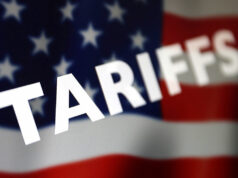12 fishermen missing after collision with HK boat
THE PHILIPPINE Coast Guard sent search and rescue teams to look for at least 12 Filipino fishermen whose boat had collided with a Hong Kong vessel on June 28.
In a statement, the Coast Guard said it had received a call from the captain of the Hong Kong-registered vessel MV Vienna Wood about the incident with FV Liberty, 14.57 nautical miles west-southwest off Mamburao in the province of Occidental Mindoro.
The Philippine boat was bound for Navotas City and had stopped for supplies in Tawi-Tawi in the nation’s south. The Hong Kong bulk carrier with 20 crew members had come from Subic Bay in Zambales province and was on its way to Australia.
“After verifying the incident and acquiring further information from MV Vienna Wood, the Philippine Coast Guard immediately activated search and rescue operations to rescue 12 missing fishermen, including its captain, as well as two passengers,” it said.
The Coast Guard sent a light utility aircraft and helicopter to support the operations, it said. It said it would send another vessel to help in the search and rescue.
The presidential palace said the collision would not aggravate relations with China, comparing it to a road accident.
“It has no big implication,” presidential spokesman Harry L. Roque said at a news briefing in Filipino. “It was just a collision.”
He added that since the accident happened in Philippine territorial waters, it would be covered by local maritime laws. “This is a matter to be governed by Philippine law,” Mr. Roque said.
The collision took place in the early hours of Sunday.
A Chinese boat allegedly sank a Filipino fishing boat in June last year and abandoned 22 fishermen on board while it was anchored at Reed Bank off Palawan province.
The sinking, which President Rodrigo R. Duterte called a “maritime incident,” put his policy on the South China Sea in the spotlight.
Mr. Duterte has sought closer trade and investment ties with China since he became president in 2016, unlike his predecessor Benigno S.C. Aquino, who sued Beijing at an international tribunal for its island-building activities and won.
China claims sovereignty over more than 80% of the South China Sea based on its so-called nine-dash line drawn on a 1940s map.
It has been building artificial islands in the disputed Spratly Islands and setting up installations including several runways.
The Philippines this month protested China’s creation of two new districts — Nansha and Xisha — in the South China Sea because these are supposedly part of Philippine territory and sea zones.
Rival Southeast Asian claimant nations and the United States have criticized China’s recent assertive moves in the disputed waterway as the world battles the coronavirus pandemic.
Aside from China and the Philippines, other claimants to the main waterway are Brunei, Indonesia, Malaysia, Taiwan and Vietnam. — Vann Marlo M. Villegas and Gillian M. Cortez



